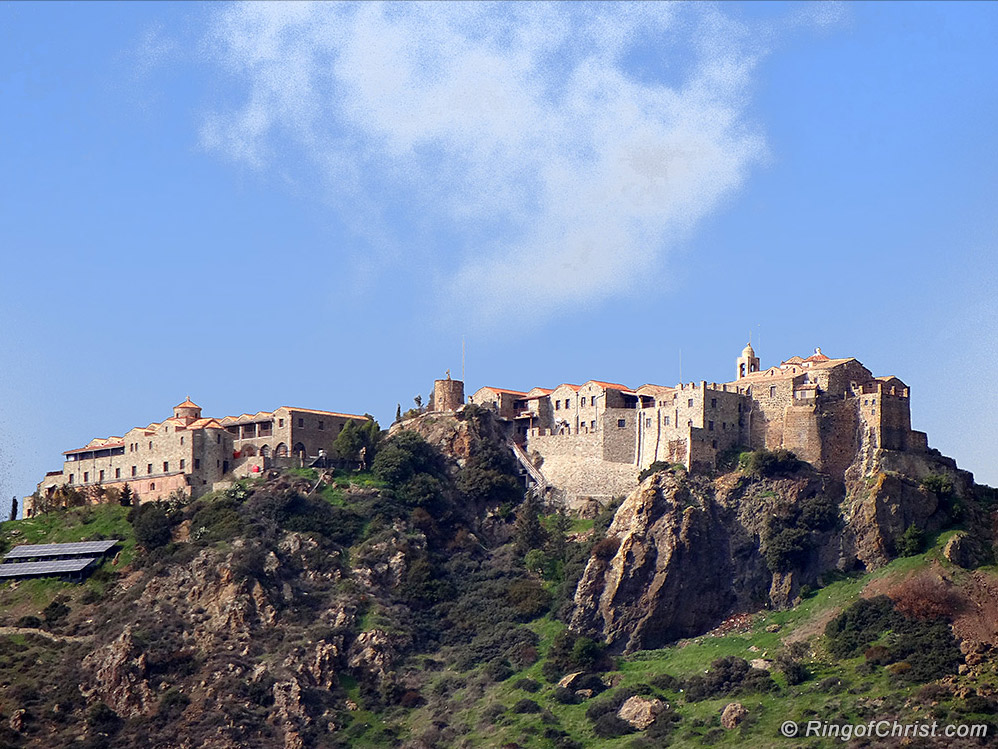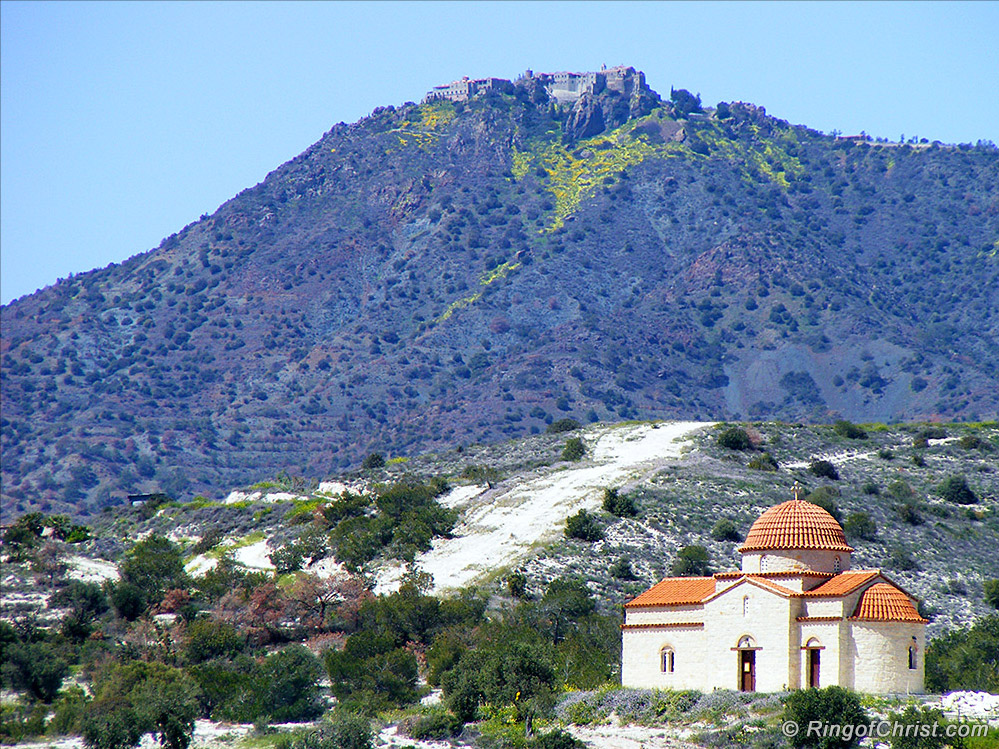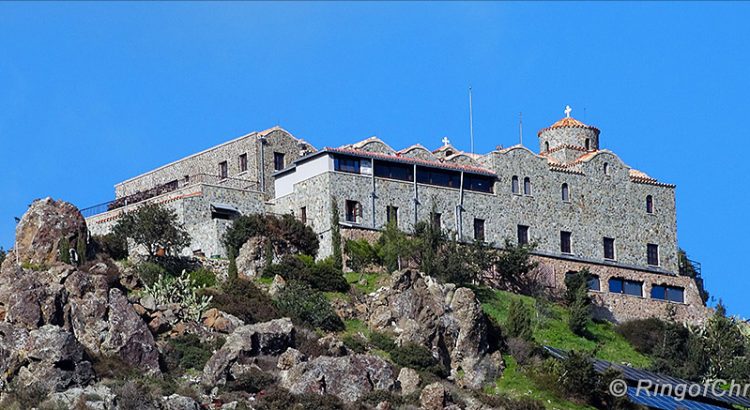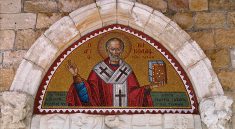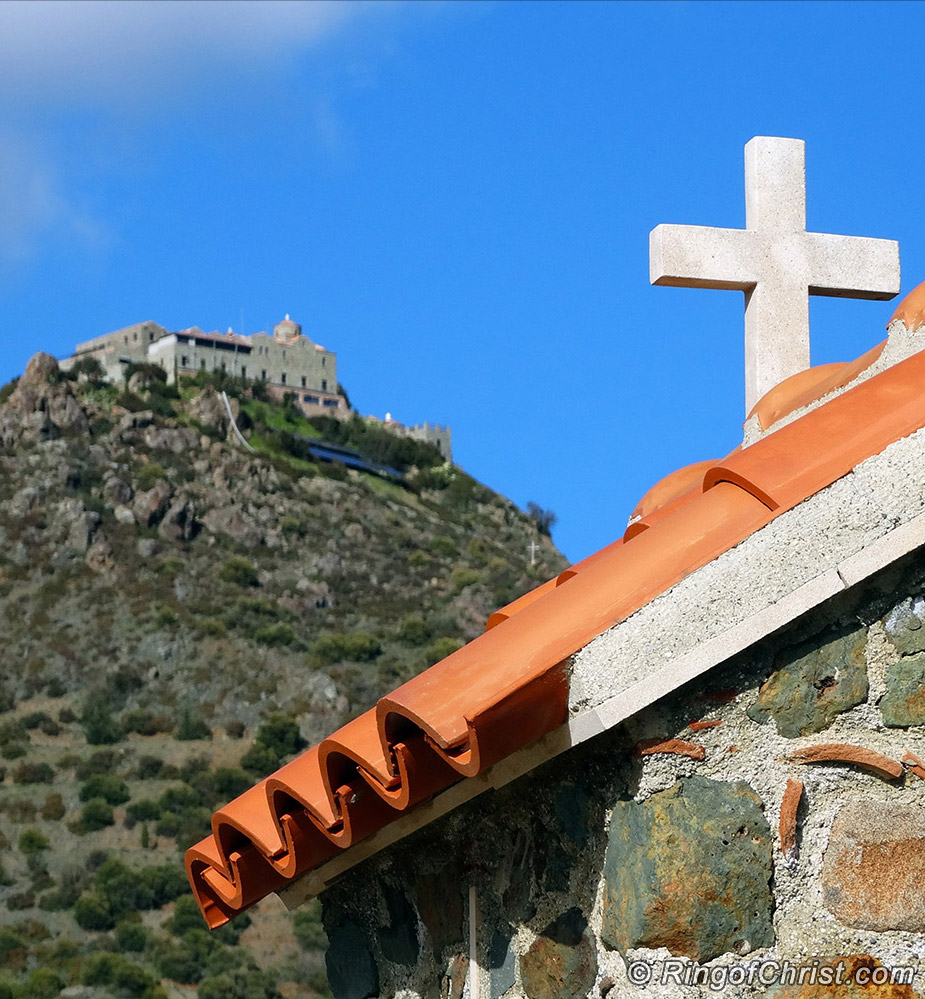
She brought it and other relics with her from the Holy Land, including a piece of rope that bound Christ, still stained with His blood, the Cross of the Good Thief, and a nail.
Through great trials and upheavals on the island the monastery has lost most of its rich collection of relics and ancient documents, but the True Cross was protected.
The early date in the 4th century makes Stavrovouni one of the oldest monasteries in the world. The name means “Mountain of the Cross.” It has always been a prime pilgrimage site on the island.
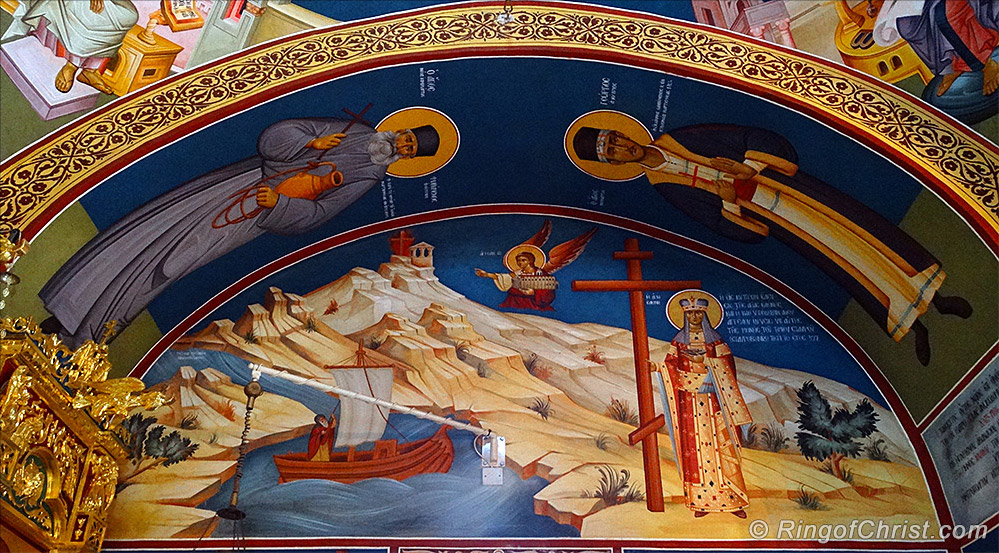
Mosaic of St Helena and the Angel at the All Saints of Cyprus ChurchThe mural in the Church of All Saints of Cyprus at Stavrovourni recounts the story of the founding of the monastery.
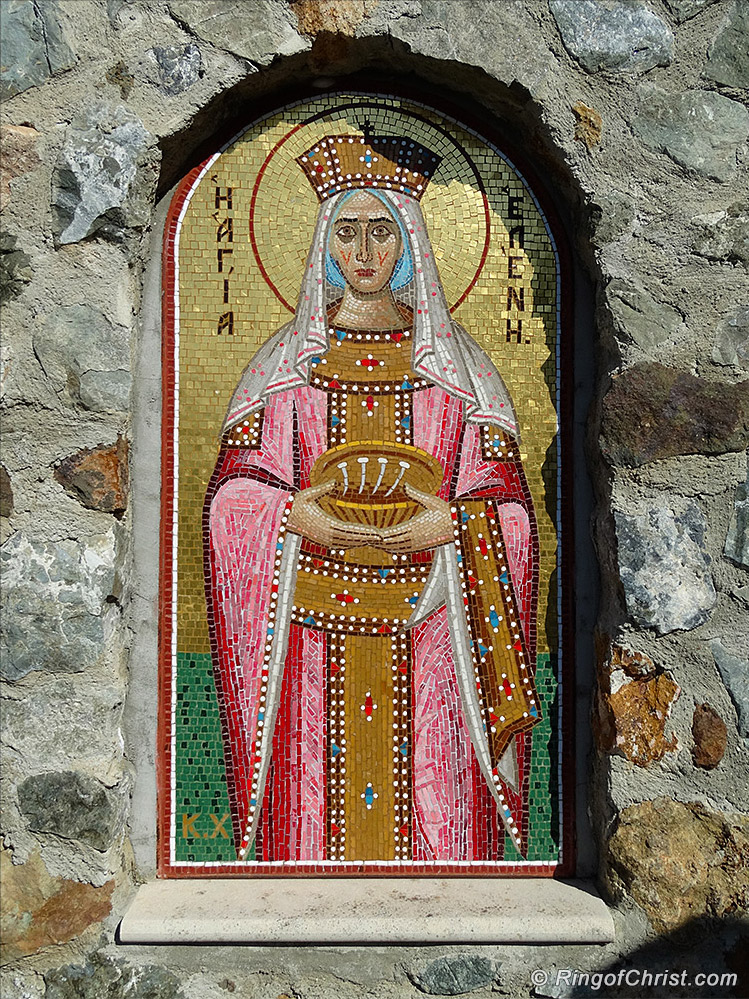
A great storm forced the ship carrying St. Helena and the Holy Relics to land on the south coast of Cyprus where she found the area overrun with poisonous snakes. An angel told her to build churches in Cyprus as she had done in Palestine, so the lady went to the top of the mountain where she found a Temple to Zeus Olympia. As she had done in the Holy Land, she ordered the temple destroyed and in its place a church was built. In it she placed a piece of the True Cross.
Eusebios as well as other 4th, 5th, and 6th century historians state that a two-year voyage (326-328/9AD) to the Holy Land took place and Helena found Golgotha and the True Cross as well as the crosses of the penitent thief and the unrepentant one.
Because she could not tell which cross belonged to whom, she had the crossbars dismantled and exchanged so that each cross would contain a portion of the penitent’s cross.
According to the tour book of the monastery, Helena gave one of these two crosses to the monastery.
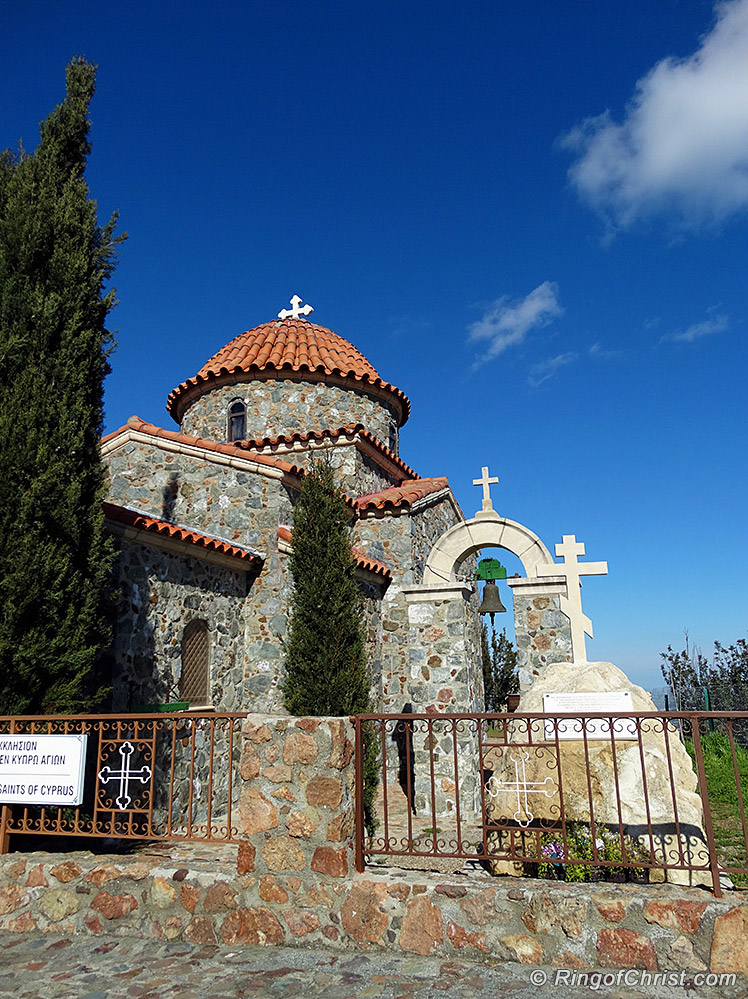
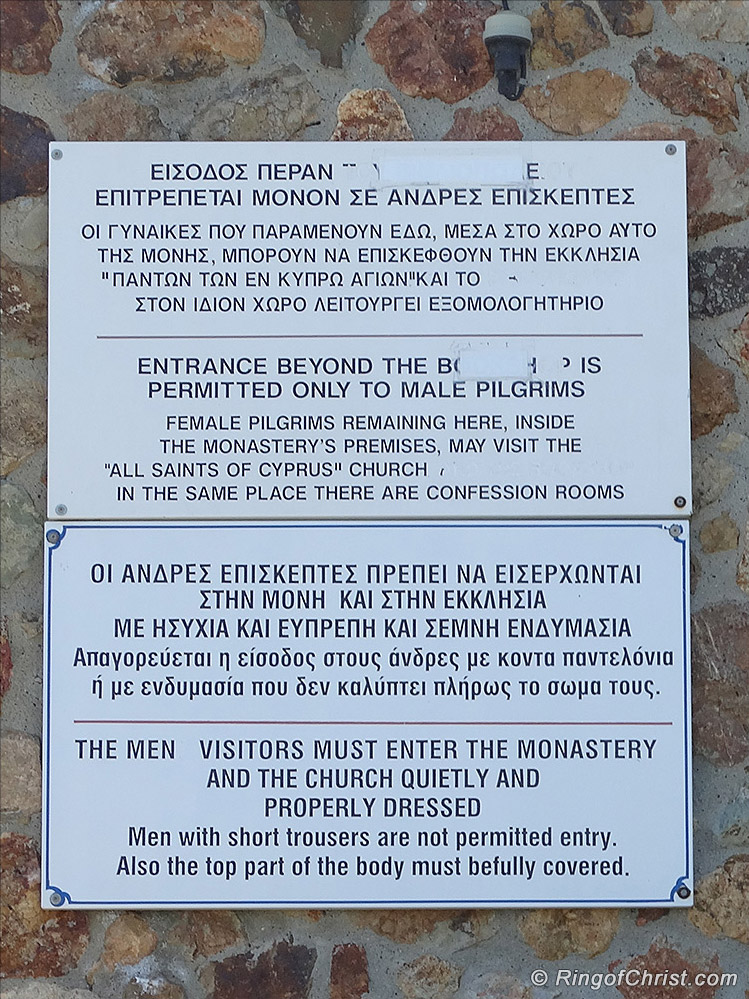
Above, left we see the front aspect of All-Saints of Cyprus Church, with its three crosses. Women are not allowed inside the monastery and must wait outside; even though, it was founded by a woman.
The oldest building on site dates to the tenth century. There is no specific information when the church that Helena founded transformed into the current monastery. And because of its isolation and lack of water, it has never grown in size as did other equally famous monasteries.
Strabo 64BC-19AD, geographer/scholar, is the first to mention the mountain by name, Olympos on Cyprus between Kition and Amathus.
